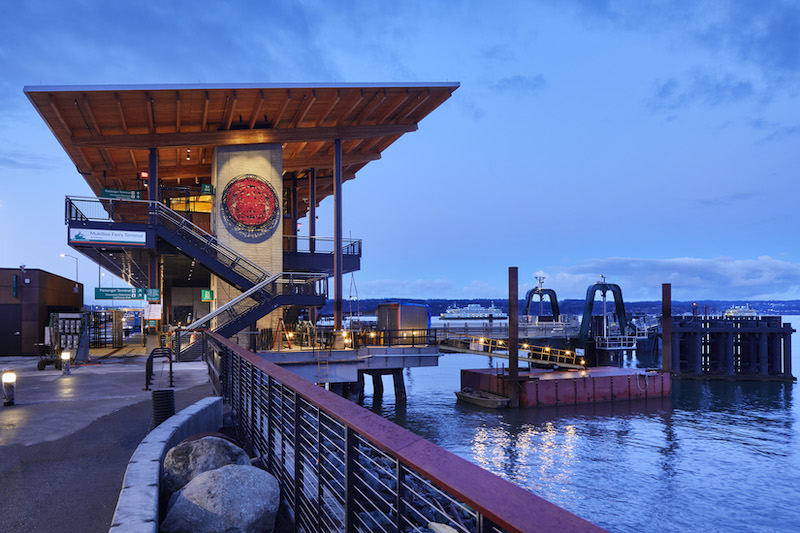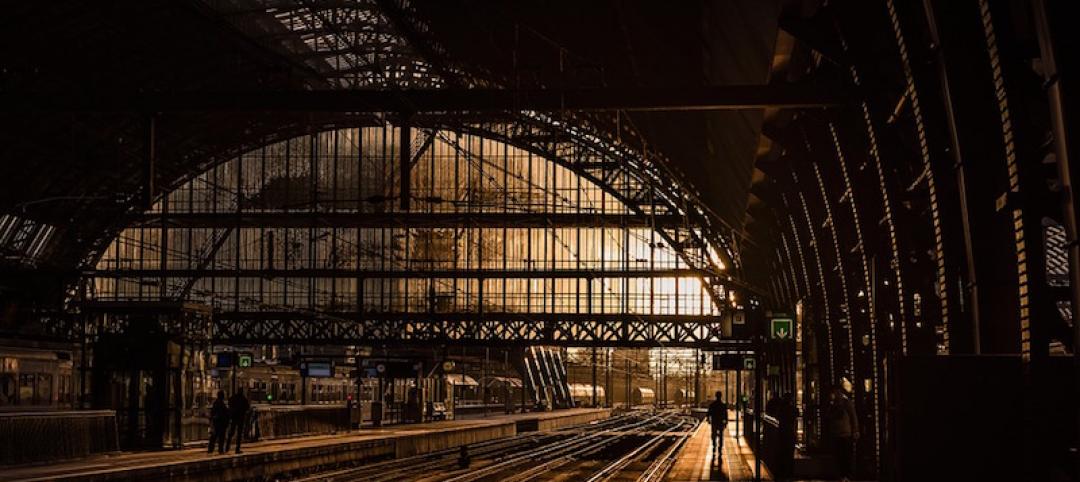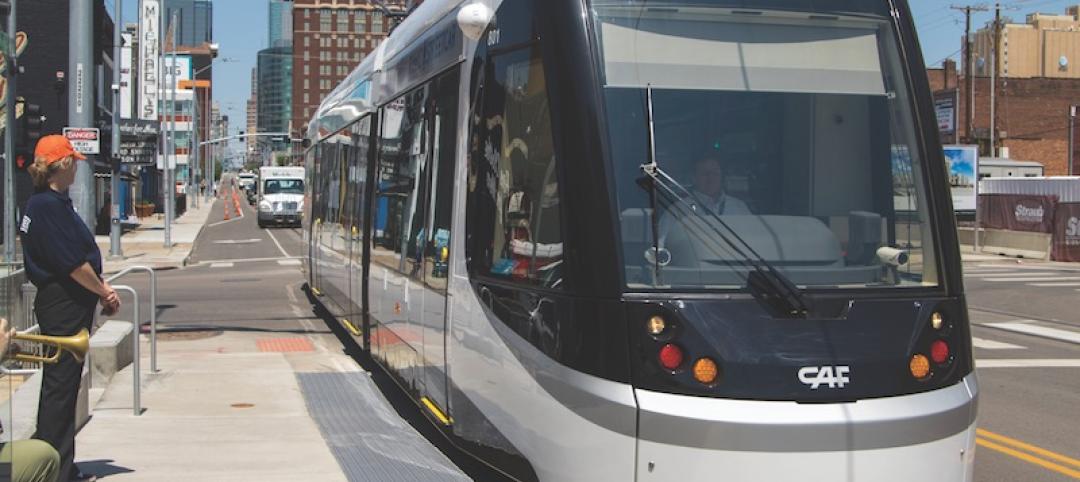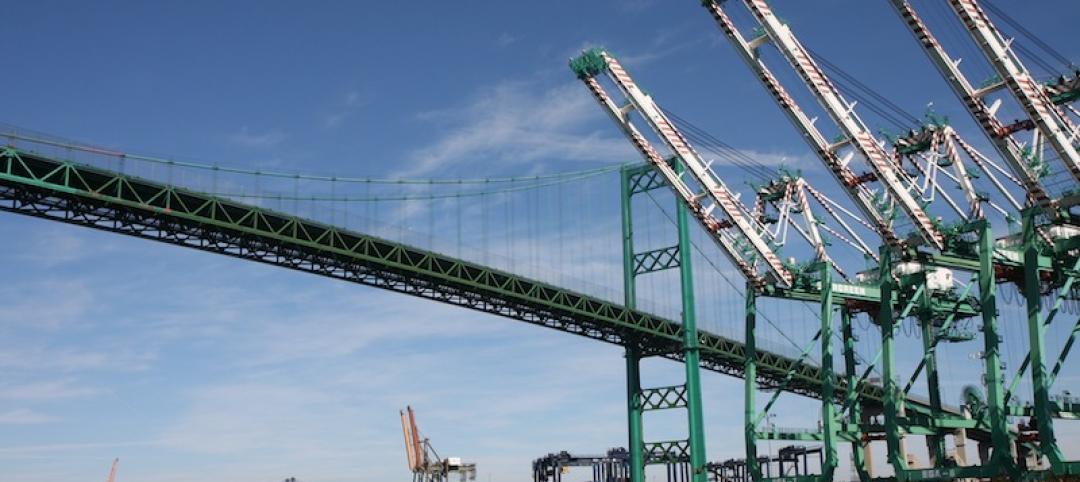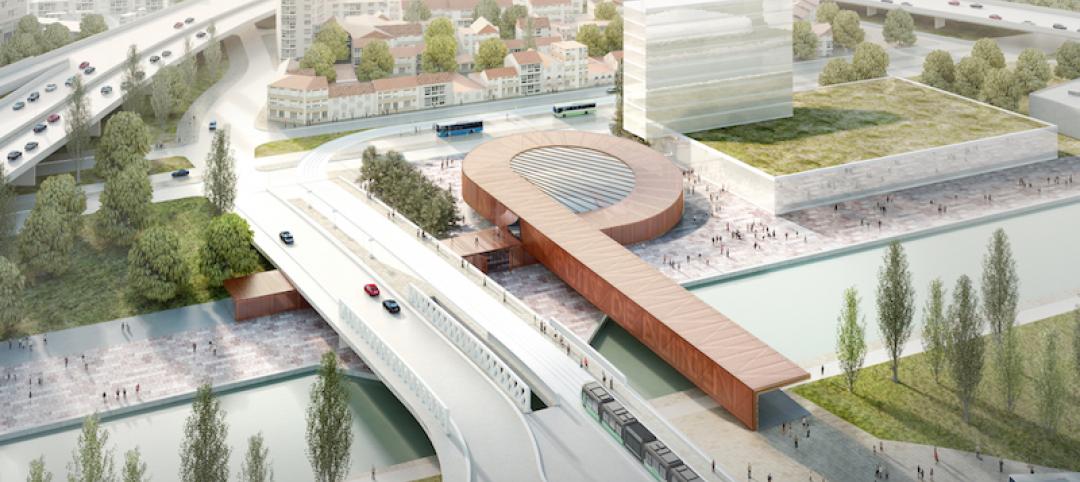Built on a repurposed brownfield site to replace the existing Mukilteo ferry terminal, the new Mukilteo Multimodal Ferry Terminal provides more space for vehicle holding and separates pedestrian and vehicle boarding with an overhead walkway for safer, more efficient loading, especially for people with disabilities. The new facility includes a 5,865-sf terminal, a 4,193-sf maintenance building, and a 828-sf toll plaza.
The two-story building was designed in partnership with KPFF Consulting Engineers with input from local Coast Salish tribes. The building’s longhouse form streamlines circulation and manages large patron flows with intuitive wayfinding. Vertical transportation cores with elevators and stairs at each end of the structure lead to a linear promenade at the upper level, from which entries to the ticketing and waiting area are plainly visible.

A daylight-filled waiting room provides views to land and sea and helps to orient ferry riders. Tribal cultural motifs created by local Native American artists are displayed throughout the building to create a welcoming atmosphere. A new waterfront promenade connects a path from downtown Mukilteo through the terminal and onto the beach, creating an elevated pathway for public use.
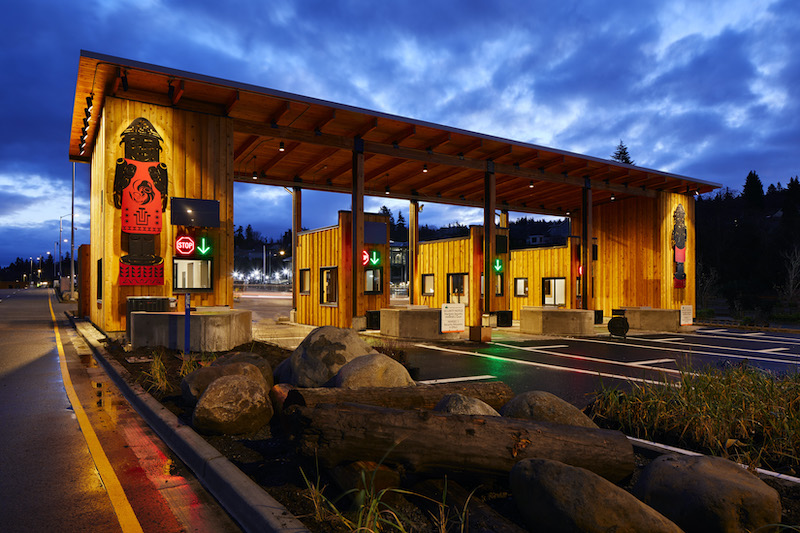
The team approached the project with strong sustainability ambitions. Removing the pier eliminated approximately 10% of the Puget Sound’s remaining toxic creosote piles. The longhouse-style shed roof provides space for a full array of photovoltaic panels, allowing the building to return energy to the grid. The roof canopy is made from cross-laminated timber while heating and cooling the concrete-slab main floor with electric heat pumps provides interior comfort year round. Additionally, a rack and pinion window system automatically opens and closes in response to changing conditions, optimizing airflow and comfort.
The new Mukilteo Multimodal Ferry Terminal officially opened on Dec. 29.

Related Stories
Giants 400 | Nov 6, 2017
Top 25 transit architecture firms
Jacobs, Skidmore, Owings & Merrill, and Perkins+Will top BD+C’s ranking of the nation’s largest transit sector architecture and AE firms, as reported in the 2017 Giants 300 Report.
Mixed-Use | Sep 25, 2017
Getting there is half the fun: Mass transit helps entertainment districts thrive
In Los Angeles, the entertainment district L.A. Live is expected to benefit from the proposed expansion of the city’s mass transit system.
Transportation & Parking Facilities | Aug 6, 2017
Post Panama Canal expansion, the top three U.S. ports still rule
But land constraints around the terminals are pushing asset prices and rents to new highs.
Transit Facilities | Jun 21, 2017
Foster + Partners unveils design for the Ourense FFCC Station in Galicia, Spain
The project will create key infrastructure for the future development of the city and provide it a new social focus.
Transit Facilities | Mar 31, 2017
Mississauga Bus Rapid Transit stations share common theme but sport custom details
The route will connect with Toronto public transit.
Transit Facilities | Mar 30, 2017
Train station architectural design fundamentals: Accessibility
If safety is the number one priority for train stations, then accessibility comes in at a close second.
Transit Facilities | Feb 7, 2017
Wood and glass dominate Swedish city’s new ‘living room’
The building will be a train station and City Hall for the Swedish city of Växjö.
Transportation & Parking Facilities | Jan 31, 2017
Public transportation of the future: Four new sustainable technologies
In 2014, Americans spent an average of 42 hours per year sitting in traffic jams.
Transit Facilities | Nov 15, 2016
The winning design for the Paris metro station competition looks like a giant, loopy “P”
Bjarke Ingels Group and Silvio d’Ascia Architecture teamed up to create the winning submission.
Transit Facilities | Sep 30, 2016
Five finalists revealed for NY Port Authority Bus Terminal redesign project
The public will now judge the five proposals by providing comments and feedback.


